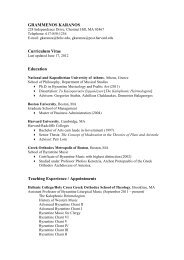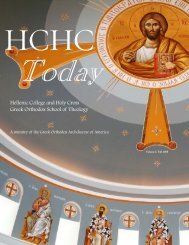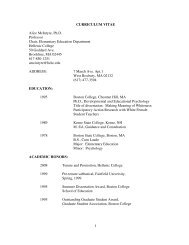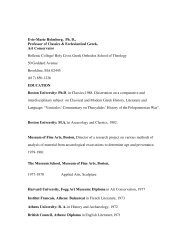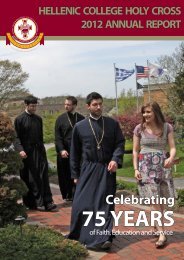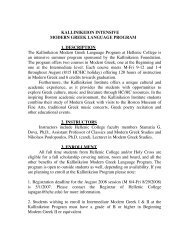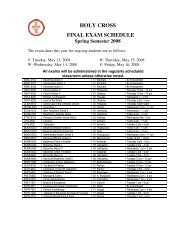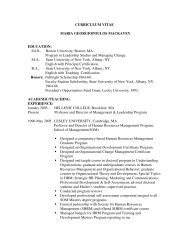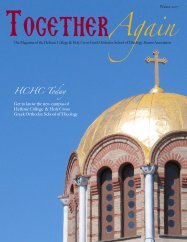GREEK, ROMAN AND BYZANTINE OBJECTS ... - Hellenic College
GREEK, ROMAN AND BYZANTINE OBJECTS ... - Hellenic College
GREEK, ROMAN AND BYZANTINE OBJECTS ... - Hellenic College
Create successful ePaper yourself
Turn your PDF publications into a flip-book with our unique Google optimized e-Paper software.
3.III Byzantine Coins<br />
Byzantine coinage, according to numismatists, begins with the monetary reform<br />
of Anastasius I in 498. The two main Late Roman denominations of the gold<br />
solidus and the bronze nummus were the standard. Anastasius introduced new<br />
bronze coins, multiple of the nummus. These were the 40 nummi (also known as<br />
follis), the 20 nummi (half-follis), the 10 nummi and 5 nummi coins. The obverse of<br />
these coins displayed a stylized portrait of the emperor while the reverse<br />
featured the value of the denomination represented according to the Greek<br />
numeral system (M=40, K=20, I=10, E=5). Silver was rarer with the exception of<br />
the Hexagram coin, first issued by Heraclius in 615 and until the end of the<br />
seventh century. This silver coin was succeeded by the miliaresion, originally a<br />
ceremonial coin established by Leo III the Isaurian around 720 and then<br />
standardized from ca. 830 until the late eleventh century when it was<br />
discontinued after being repeatedly debased. The gold solidus or nomisma was the<br />
standard commercial currency until the eleventh century when a continuous<br />
debasement began under successive emperors starting with Romanos Argyros<br />
(1028-1034).<br />
The Byzantine monetary system is characterized by a series of changes<br />
and reforms. In the seventh century, the 40 nummi (follis) became the only bronze<br />
coin that was issued continually. Its size was now significantly smaller than the<br />
sixth century and it continued to decrease in size despite the attempt of Justinian<br />
II to restore it to its previous size. During the early ninth century, a lighter gold<br />
solidus (about three fourths of the normal solidus weight, which was roughly 4.48<br />
grams ) was issued, named tetarteron and the full weight solidus was now called<br />
the histamenon, roughly 4.48. The unpopularity of the tetarteron meant that it was<br />
only issued sporadically over the next century. Light weight solidi, featuring a<br />
star on both obverse and reverse and weighing about 4.25 grams, were also<br />
issued for trade with the Near East.<br />
Under Alexius I Comnenus (1081-1118), the debased solidus was<br />
discontinued and a gold coin of a higher fineness, and slightly smaller than the<br />
solidus, was issued, known as the hyperpyron, weighing 4.45 grams. The electrum<br />
aspron trachy (debased gold) (trachy, the Greek word for 'rough'), the billon aspron<br />
trachy (debased silver) and the copper tetarteron were also introduced alongside<br />
the hyperpyron. Further new issues of coins occurred under Andronicus II and in<br />
1367 when the gold issues were discontinued and a regular silver issue called the<br />
stavraton replaced gold. Byzantine coins became thinner and wider progressively<br />
17



